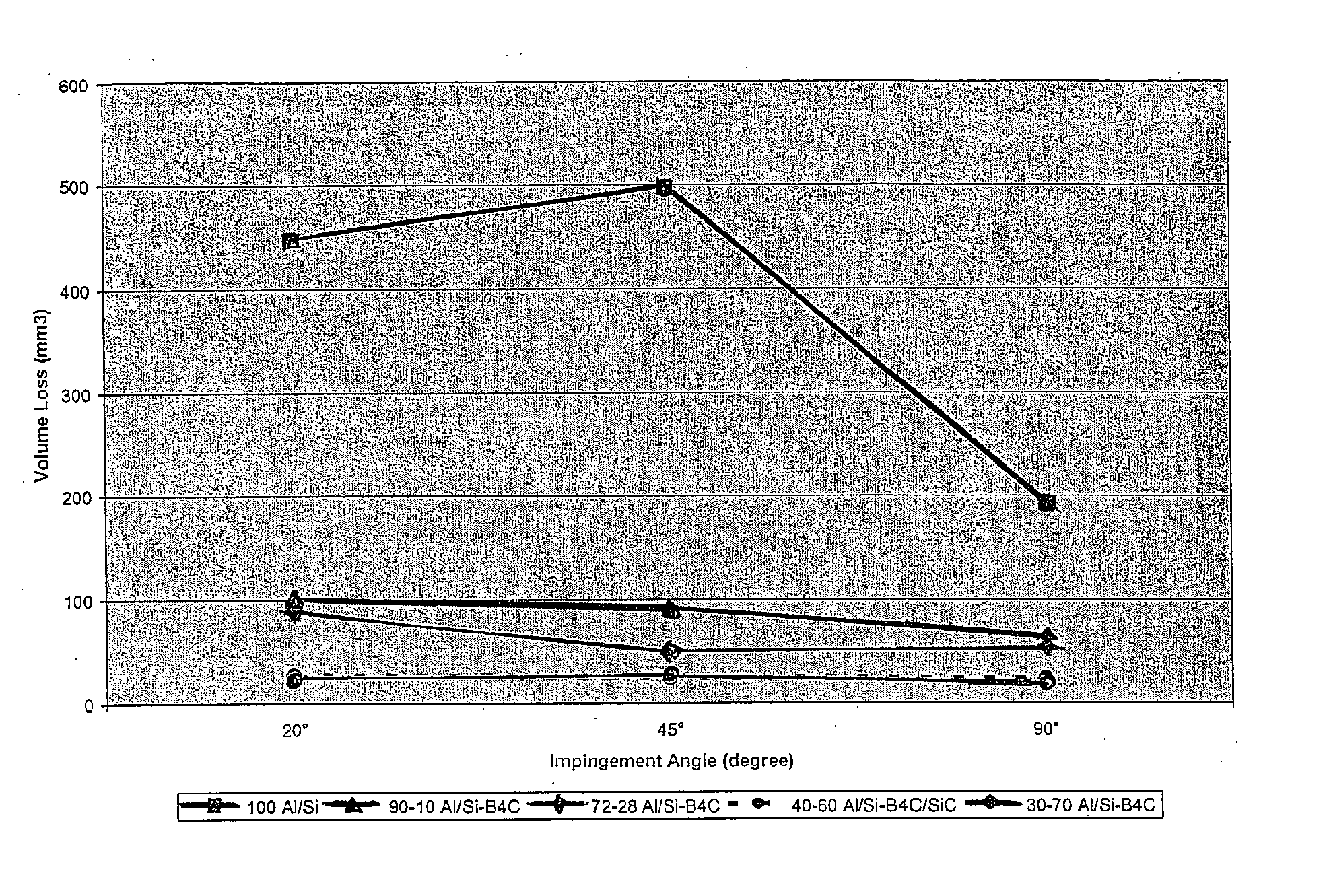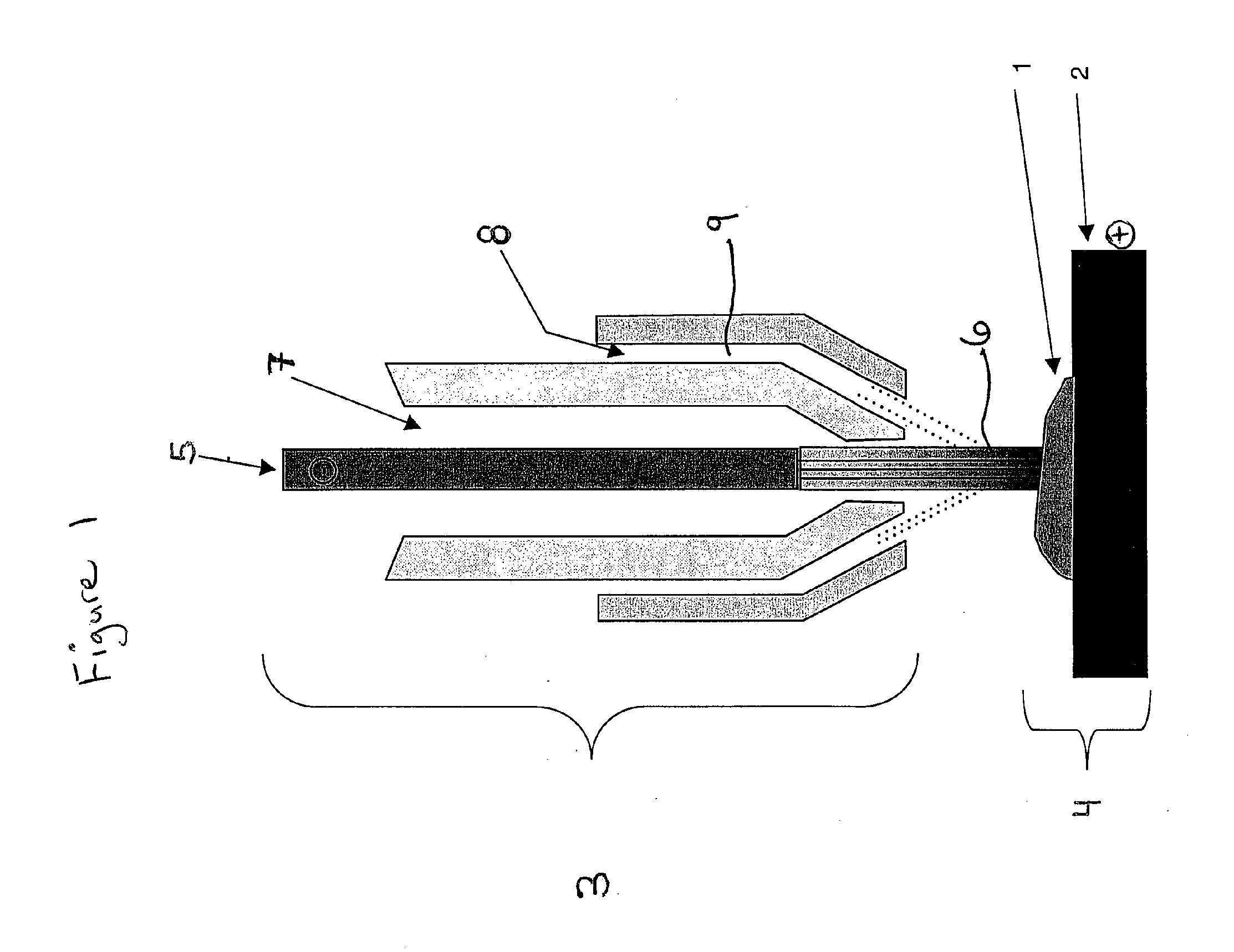Lightweight wear-resistant weld overlay
a technology of weld overlay and light weight, which is applied in the field of lightweight wear-resistant weld overlay, can solve the problems of affecting the life of the screen is relatively short, and the hardfacing system, involving wc, has problems associated with it, so as to increase the overall weight of the metal substrate and increase the wear resistance
- Summary
- Abstract
- Description
- Claims
- Application Information
AI Technical Summary
Benefits of technology
Problems solved by technology
Method used
Image
Examples
example i
DISCUSSION RELATIVE TO EXAMPLE I
[0054] A reasonably wide range of welding parameters produced results similar to the foregoing. This is in contrast to the very tight controls on welding parameters one requires when PTA welding WC—Ni—Cr—B—Si overlays to produce acceptable carbide distribution throughout the weld. The welding parameters are controlled by WC decomposition and poor distribution (due to slower cooling rates) at higher welding heat inputs and lack of fusion at low heat inputs.
[0055] The poor distribution of WC in Ni—Cr—B—Si metal matrix material is partially due to the significantly different densities of WC and WC / W2C (15.8-17.2 g / cm3) compared to approximately 8.9 g / cm3 for nickel alloys. In contrast, B4C or SiC with densities of 2.52 and 3.21 g / cm3, respectively, are much more compatible with aluminum which has a density of 2.7 g / cm3. Practically, this means that a much larger welding parameter window is possible with the present system, which allows the welder more f...
example ii
[0058] This Example demonstrates that SiC can be substituted for some or all of the B4C.
[0059] The same welding parameters, equipment and procedures were used to produce weld overlays using a 40 wt. % Al-12 wt. % Si+30 wt. % B4C+30 wt. % SiC feed mixture as in Example I. FIG. 10 shows that this combination gave essentially the same erosion testing results as the 30 wt. % Al-12 wt. % Si+70 wt. % B4C combination. Additionally, the photomicrograph in FIG. 11 shows that the dark phase (SiC) and the light phase (B4C) carbides are very angular indicating little decomposition of the carbides during processing.
[0060] This substitution would be done in consideration of the properties required for the final weld overlay. It appears from FIG. 10 that erosion performance is acceptable for both the B4C and B4C / SiC mixture tested. However, the high silicon content of the aluminum alloy also inhibits the degradation of SiC, which begins decomposing at 1700° C. B4C does not decompose but sublimes...
example iii
[0061] The aluminum-carbide metal matrix composite overlays of the invention can be joined to most other metals either directly (as shown in Examples I and II) or indirectly by precoating the other metals or using a bi-metallic transition piece. For example, to hardface a carbon steel substrate, the overlay is deposited onto an intermediate alloy, which is placed onto the carbon steel substrate by a number of methods known to a person skilled in the art. This is often referred to in the art as “buttering” the steel with a “butter layer” such as a nickel or copper alloy.
[0062] Methods for buttering steel can be found in American Welding Society Welding Handbook, Materials and Applications—Part 1, “Aluminum and Aluminum Alloys, Joining to Other Metals”, (American Welding Society 1996), p. 97, and include the following:
[0063] 1. brazing a nickel or copper based alloy onto the carbon steel surface;
[0064] 2. roll bonding, cladding or explosion bonding a nickel or copper based alloy of...
PUM
| Property | Measurement | Unit |
|---|---|---|
| Size | aaaaa | aaaaa |
| Size | aaaaa | aaaaa |
| Size | aaaaa | aaaaa |
Abstract
Description
Claims
Application Information
 Login to View More
Login to View More - R&D
- Intellectual Property
- Life Sciences
- Materials
- Tech Scout
- Unparalleled Data Quality
- Higher Quality Content
- 60% Fewer Hallucinations
Browse by: Latest US Patents, China's latest patents, Technical Efficacy Thesaurus, Application Domain, Technology Topic, Popular Technical Reports.
© 2025 PatSnap. All rights reserved.Legal|Privacy policy|Modern Slavery Act Transparency Statement|Sitemap|About US| Contact US: help@patsnap.com



